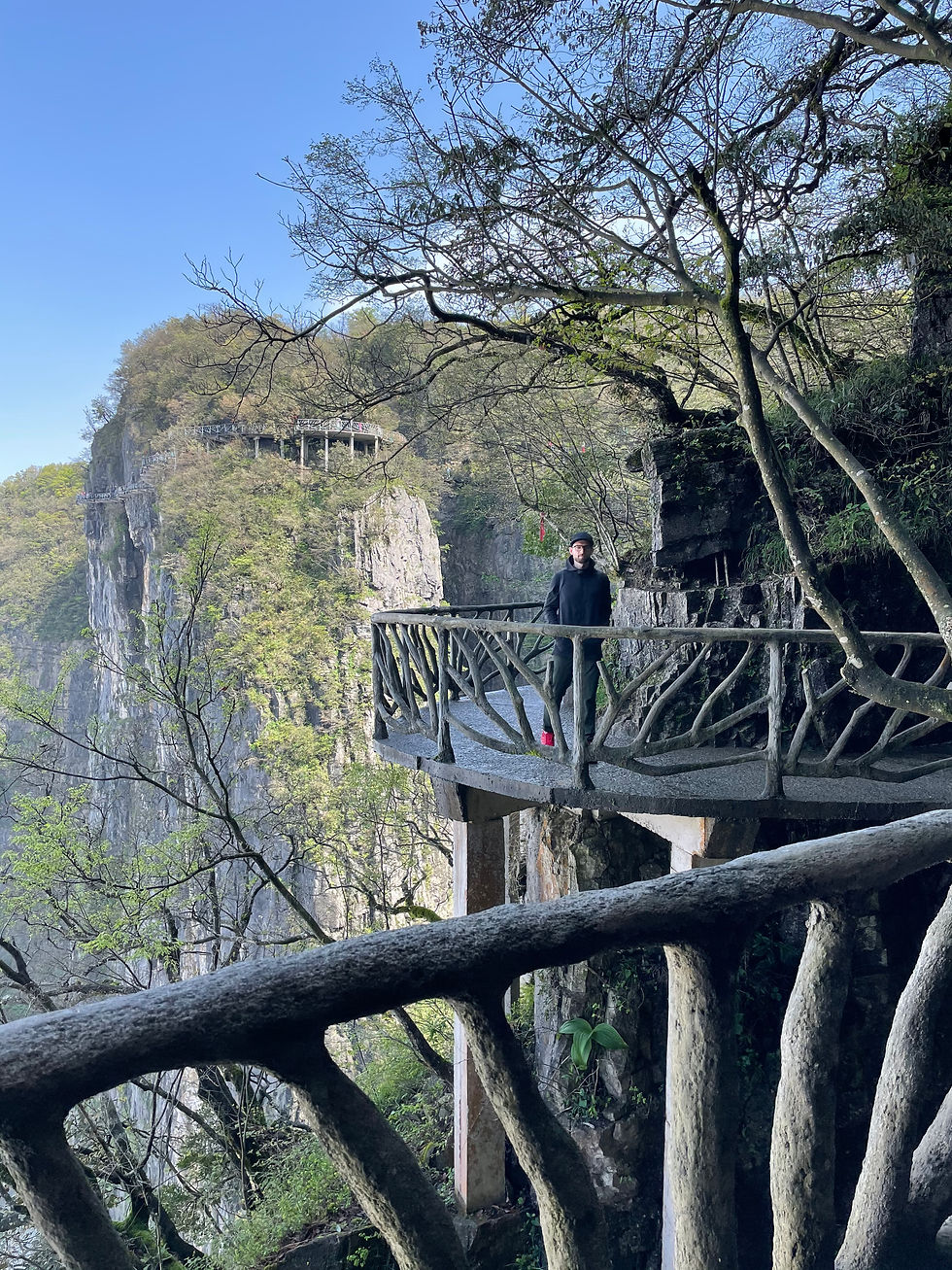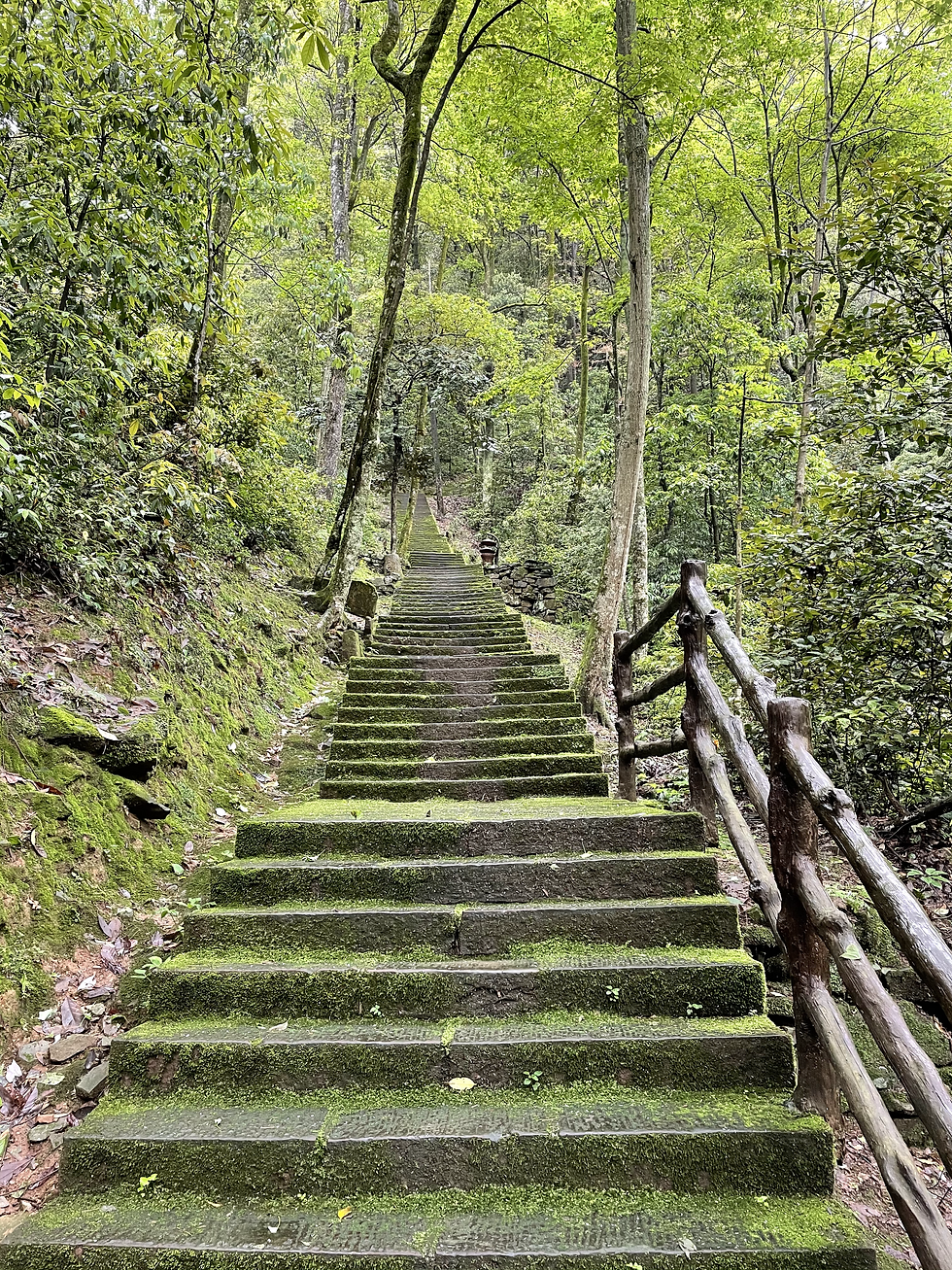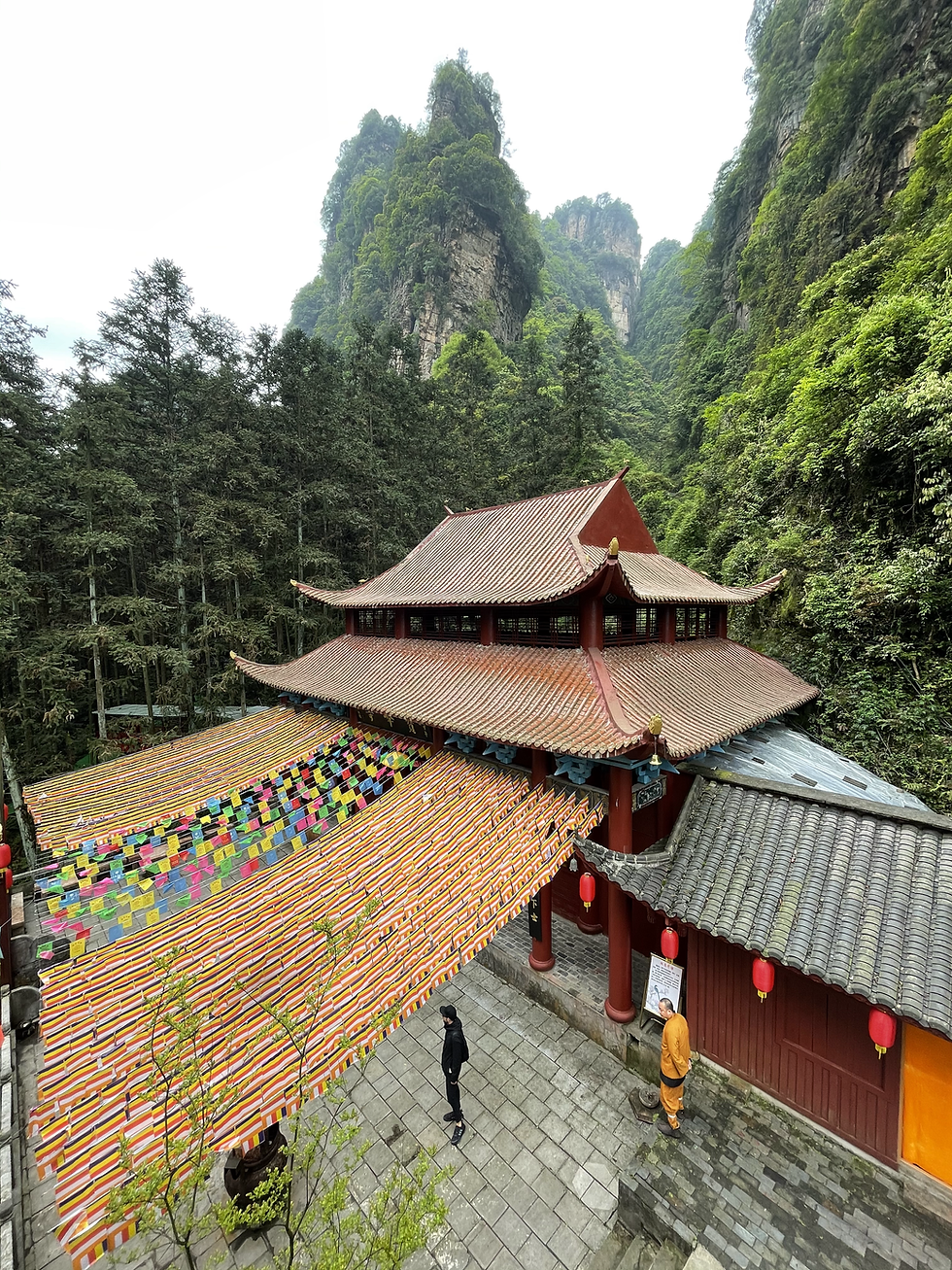Weekly Blog #58 - Another travelogue...
- Marcus

- May 16, 2021
- 5 min read
There are a few places in China that are "must visits". Xi'an, Shangri-La, The Great Wall, etc... One of these places is called Zhangjiajie. Most people have probably never heard of it. But if you've watched the movie Avatar you've seen it. My wife and I went there two weeks ago, just before the May holiday madness. There are allegedly over 265 million people traveling this weekend so we made the "smart" choice, even though the hotel was already packed with pensioners.
Arriving on a Wednesday night was a good compromise since we had the whole Thursday and Friday before the masses arrived on Friday night. We spent our first night at a small hotel in Zhangjiajie, close to the 25 minute long cable car that takes you up to Tianmen Mountain. Spending the night at the local hotel was easy and convenient since we were quiet tired after arriving around 11pm at the airport. However, breakfast was a completely different story: 100% Chinese food in a local (small city) environment, shared tables, eating noises, people smoking next to you... and worst of all: no coffee! Probably one of the most Chinese experiences we've had thus far. But you live and you learn and that's what we're here for.
From the second night on until Monday we chose to stay in one of the big hotels in Wulingyuan. For us, this is usually the best choice since we get to make arrangements with the hotel staff that small hotels wouldn't be able to provide (one of them being upgraded to a quiet room). But before moving there we took "the longest cable car in the world" (I guess that means "in China") up to Tianmen mountain. Here are some impressions!

Tianmen Mountain is roughly 1500m above sea-level. It's the highest peak (actually a double-peak) in the region and you can ascend to the top via cable car from the town center of Zhangjiajie. The ride takes roughly 25 minutes and boasts some impressive views of the town, the surrounding fields and forests as well as the mountain itself. We chose a somewhat cloudy day but fortunately above 1000m the cable car took us through a thick layer of clouds. This is what it looked like above the clouds!

Once we got to the top, we hiked for about 4 hours. There are some narrow but well built gallery walks that have been constructed directly on the side of the mountain/cliff - however, if you are afraid of heights (like I am) it can get quite scary.

Made it!

Tianmenshan Temple, as the name suggests, is located on top of Tianmen Mountain. We wanted to take a break there and visit the vegetarian restaurant to grab a cheap and healthy lunch. Most of the Buddhist temples here in China operate a vegetarian restaurant, you can buy vouchers and have lunch with the monks. A highly recommended feature! Unfortunately, and due to a lack of visitors in 2020 and early 2021, it's currently closed.

However, our timing was good and we managed to see the cherry-blossom which usually blooms a few weeks later than in the valley...

The next day, our main goal was to see one of the most iconic peaks of the region: the so-called "Avatar Hallelujah Mountain". It got its name from the movie that's been inspired by this landscape about 10 years ago. Although the Chinese government doesn't approve of it having the name and receiving so much attention because of the movie, many people still come here just to see the mountain.

I have to admit that the signage around Zhangjiajie Forst Park is the worst I've ever seen in any national park. I won't go into details but there is a reason why the tourists offices won't provide any accurate maps (politics...). Also, the usual way to "hike" is by "environmental friendly busses" (which are actually old diesel busses...). But we found a few nice hiking routes anyways and managed to leave the crowds behind for several hours on end (!) because nobody here wanted to take the old stairs up or down the mountain.

From the platform of Avatar Hallelujah Mountain down to the so-called Gold-Whip-Creek it's about 2 hours on a slippery slope of stairs. Nobody has been maintaining it for quite some time so it was an adventure to descent but it was totally worth it once we managed to get down to the creek.

The Gold-Whip-Creek is an almost flat 7.5 km hike. We managed to see some wild monkeys, the iconic magpie bird and only very few other hikers.

Since we came down somewhere around the middle of the track on that day and because we found it to be very peaceful and relaxing after walking many stairs down the mountain we decided to walk the whole stretch backwards on the next day.

Stunning views from beneath the peaks of Tianzi Mountain, Yuanjiajie and Yangjiajie as well as crystal clear water are the main features of the Gold-Whip-Creek...

The next day, we decided to finally go all-in and climb a few mountains instead of using the cable car or bus. First stop: Tianzi Mountain.

However, the start of our hike still required us to go up to Tianzi Mountain by cable car. The highest peak of the Tianzi Mountain range is Kunlun Peak which stands roughly 1260m above sea-level. From there we took a narrow but beautiful stone-staircase down the side of the mountain. The misty and cold weather and the absolute absence of any other hikers for nearly two hours was a blessing for mind and body.

We continued our hike and went all the way over and up to a different plateau which houses Huangshi Village with some more spectacular views of the "floating mountains" - a hike of about 2 hours and roughly 800m up another narrow staircase.

On our final day we decided to take it slow and visit Baofeng lake. However, we somehow got lost after walking up a few stairs to an old temple and found ourselves on top of another mountain a few hours later (including some really wet, slippery and narrow stairs) which probably boasted the most beautiful and intimate views of the whole mountain range since there was absolutely nobody else taking the hike with us. We met the first couple of hikers a few hours later on our way back down.

The staircase up was about 30cm wide and after it had rained all night a constant stream of water came down the stairs on our way up...
No doubt about it, Zhangjiajie is a must-visit. It's been the first national park in China and an Unesco World Heritage site. With it's rugged peaks that - on some days - look like they're "floating above a sea of clouds" it is a unique place and even though some of the hot spots can be quite packed, leaving the beaten track and hiking on some of the old routes has been a once-in-a-lifetime experience.
I have to admit, it's a shame that some of the tracks are not being maintained and have not been taken care of for probably a couple of years. Therefore, it's only a matter of time until they will be unusable for hikers and tourists like us that like to walk a mile or two and not take the bus from sight to sight. Unfortunately, Chinese people love the convenience of being carried around in busses and only take pictures of the most popular sights (no matter if it's sunny or if they just stand in front of a grey wall of clouds...).
I hope that - if in 2022 tourists will be able to come back to China - some of the tracks will be "revived" and Zhangjiajie will remain it's weird charm that it gets from the lack of proper signage, some crazy engineering (e.g. Bailong Elevator and the 8 massive elevators down the mountain from Tianmen Mountain which I have not covered in this travelogue on purpose) and getting lost in some of the most beautiful landscapes in the world.





Comments